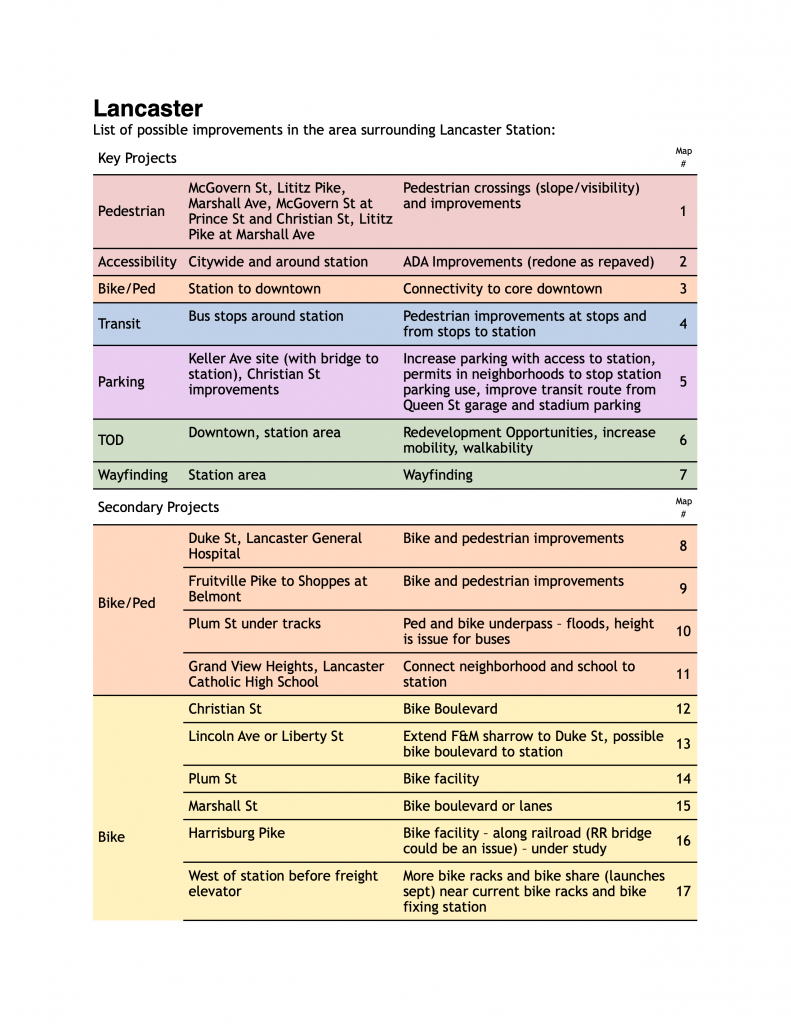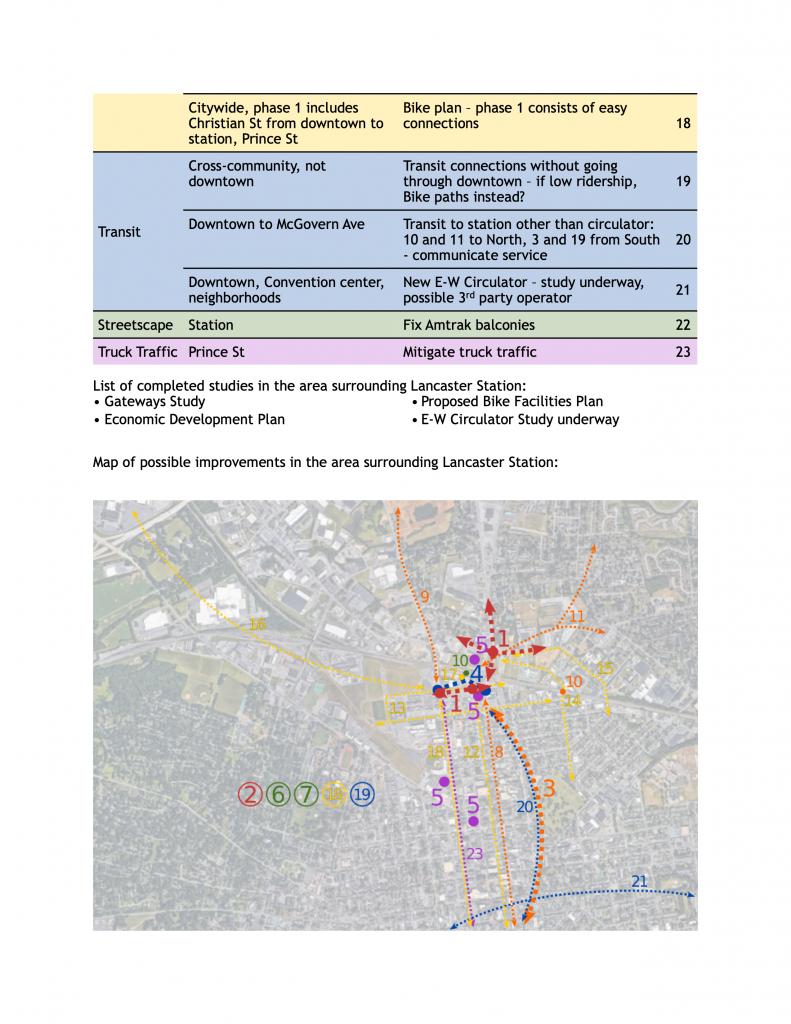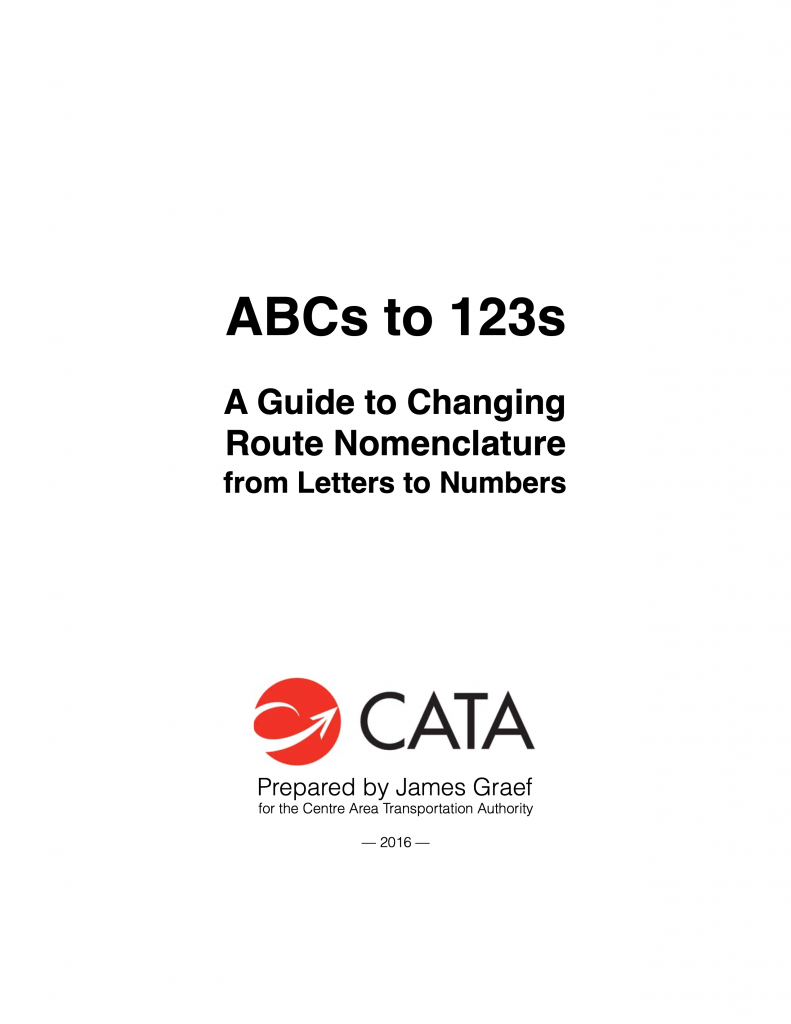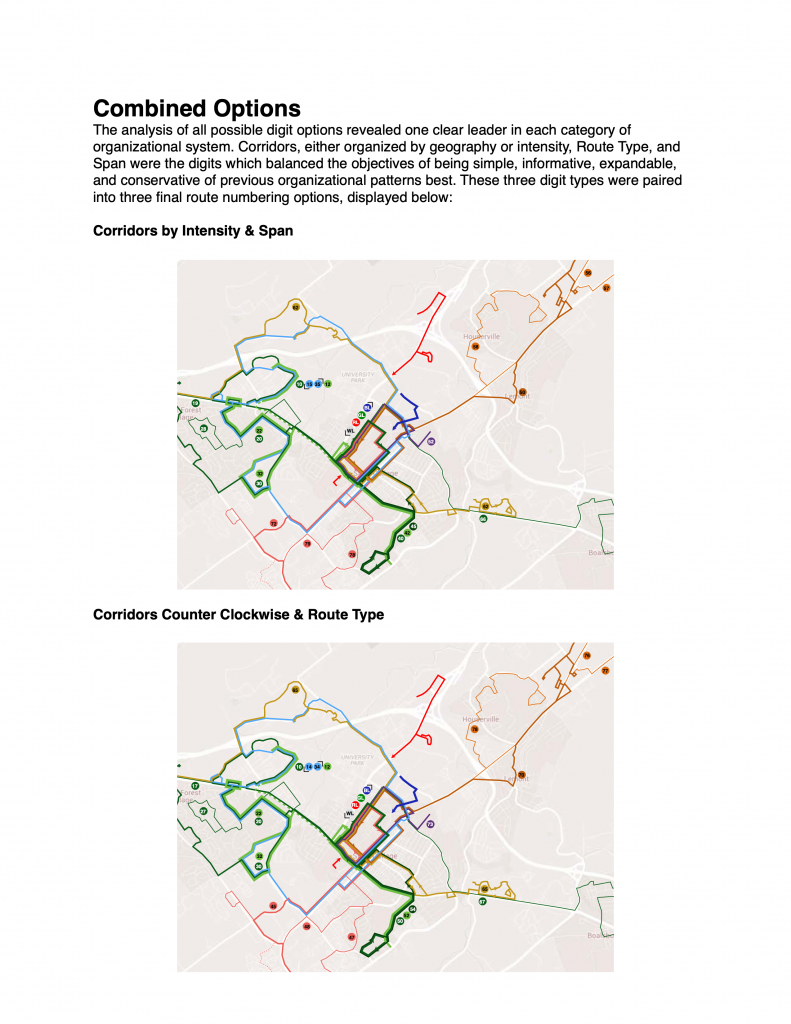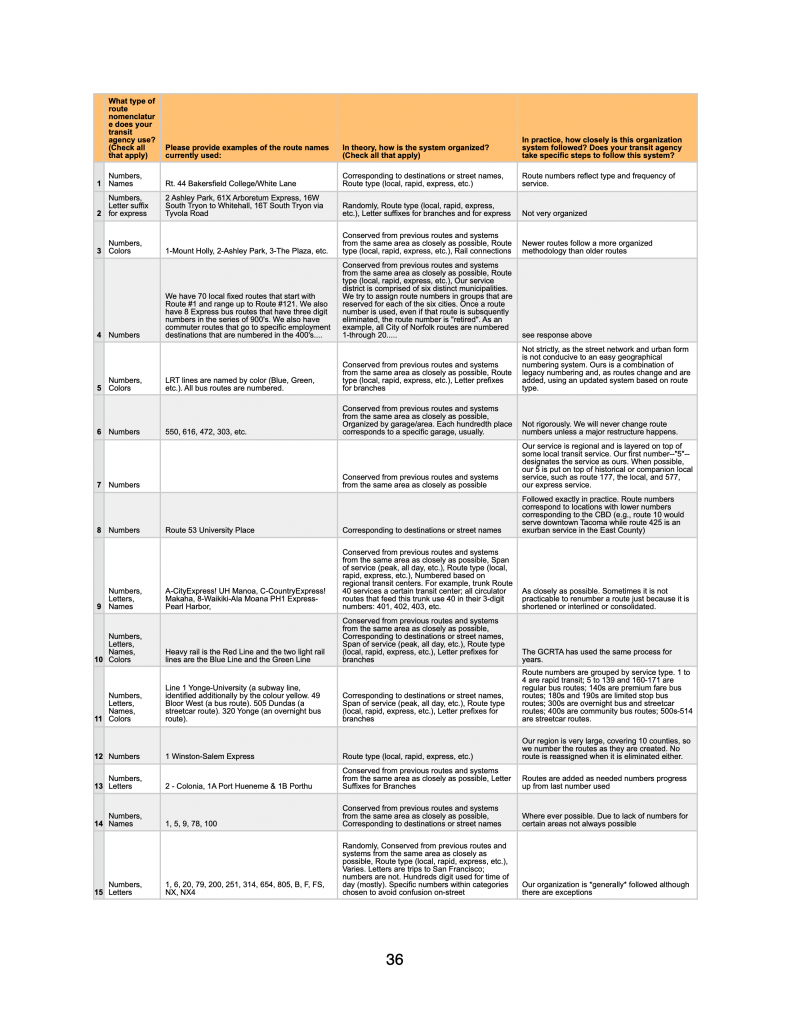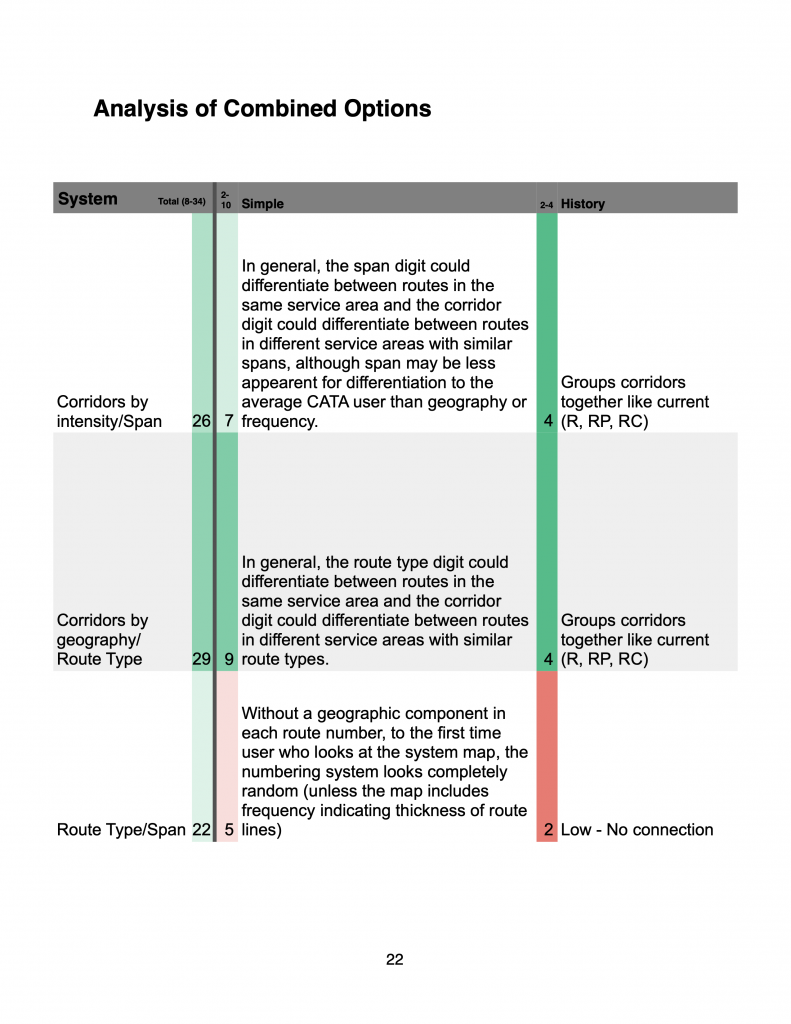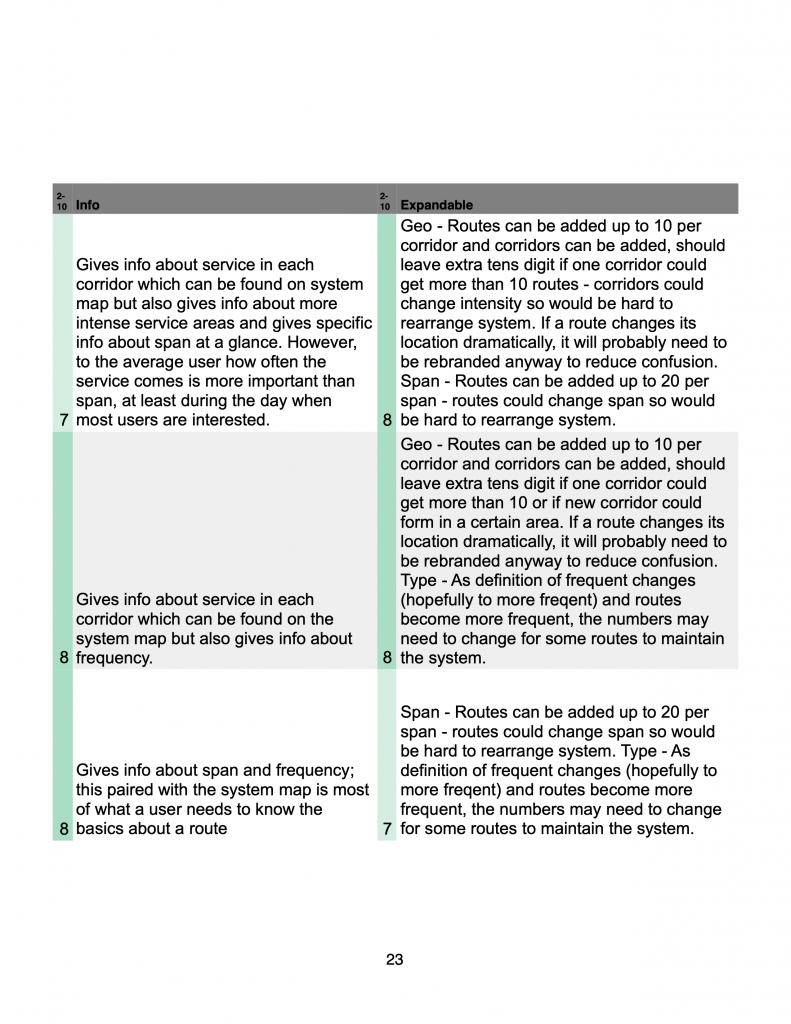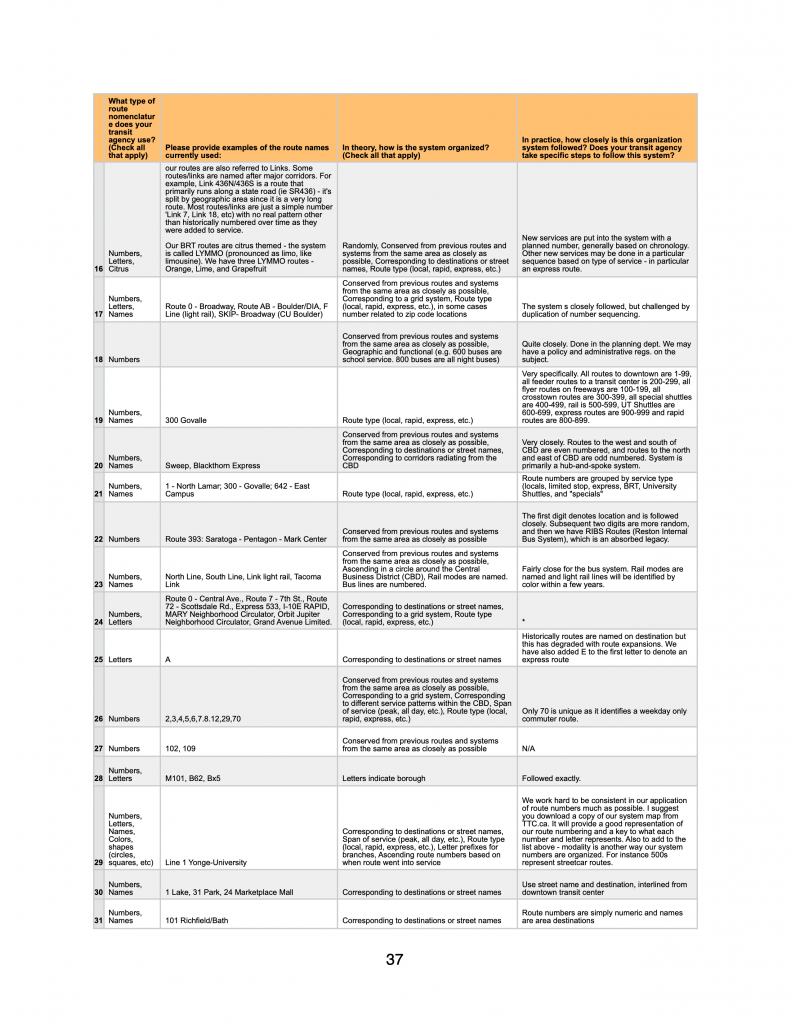Community, Environment, and Development classes have taught me many strategies for data collection: surveys, focus groups, key informant interviews. Internships have given me experience executing these strategies:
Stakeholder Brainstorming Work Sessions
Access the Keystone
Michael Baker International Planning Consulting | 2017
I recorded ideas at six brainstorming sessions with key stakeholders in communities along the Amtrak Keystone corridor, then compiled those ideas into lists and maps showing potential multi-modal projects for improving access to train stations.
Created by James Graef; used with permission from Michael Baker Intl.
International Expert Survey
ABCs to 123s: A Guide to Changing Route Nomenclature from Letters to Numbers
Centre Area Transportation Authority | 2016
I surveyed American Public Transportation Association member transit systems in the US and Canada to understand the systems which determined how their routes were named, and their process for changing route names. The data from the 31 responses was used to determine the best system of route nomenclature for CATA as it moves from route letters to route numbers, and to determine steps the agency should take to ease the transition for riders.
Development Hopes and Hesitations Survey
ced 404 individual survey project | 2021
Timothy Kelsey, Professor
Local government staff and elected and appointed officials have almost complete control over the built environment in their jurisdictions. I attempted to explore what these important minds think about new development in one growing college town.
I created a survey instrument which principally asked how important benefits and costs of new development were to personal approval of that development by local officials. I constructed the instrument for paper-based completion and on Qraltrics for online completion. I sent the survey to 123 elected and appointed officials and staff of the six municipalities in the Centre Region. With 33 responses, I compiled lists of the most and least important benefits and costs of development according to those officials. This work could be useful in determining efficient strategies to increase acceptance of development by municipal officials and staff in communities with high housing needs like the Centre Region.
